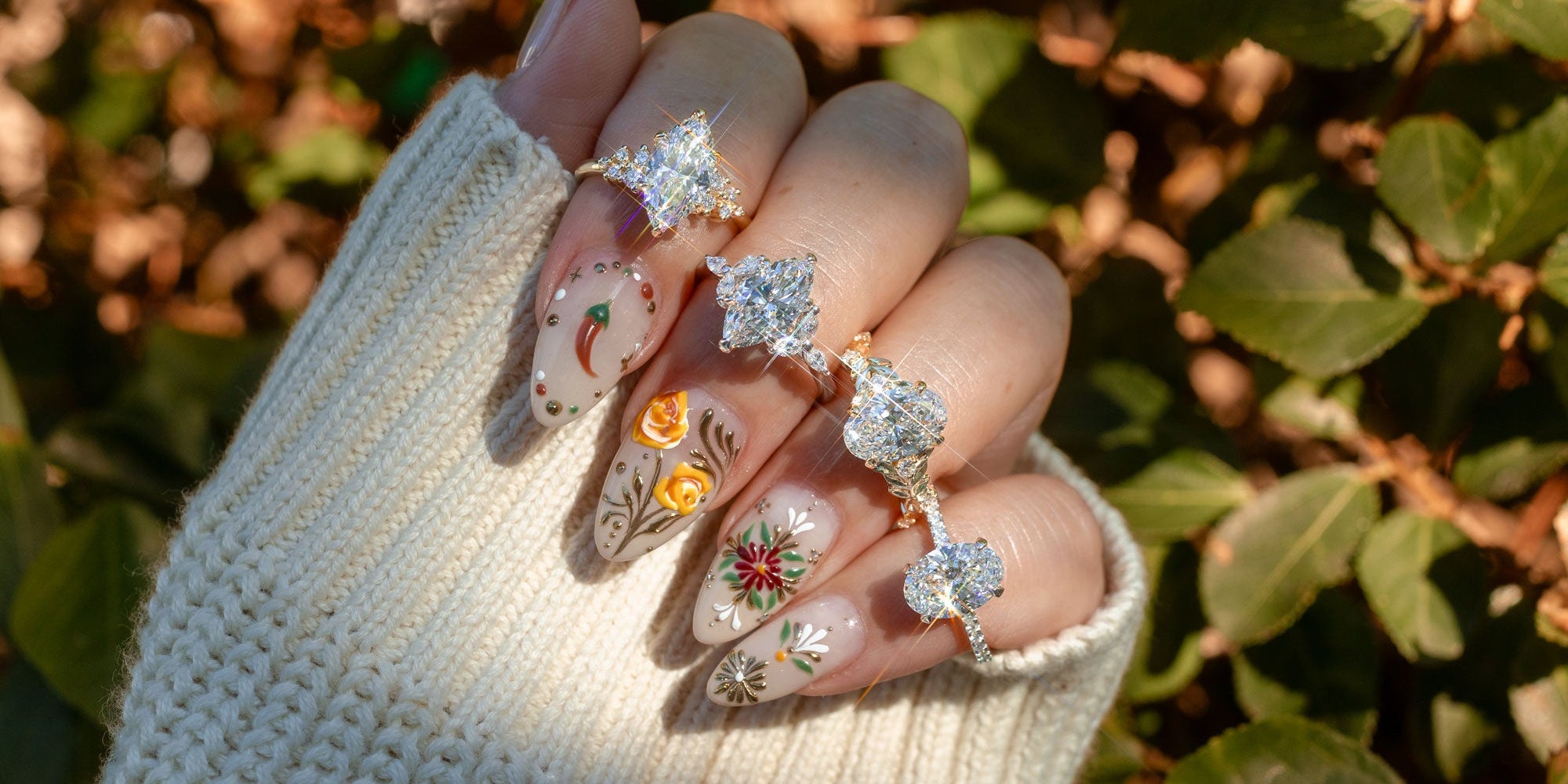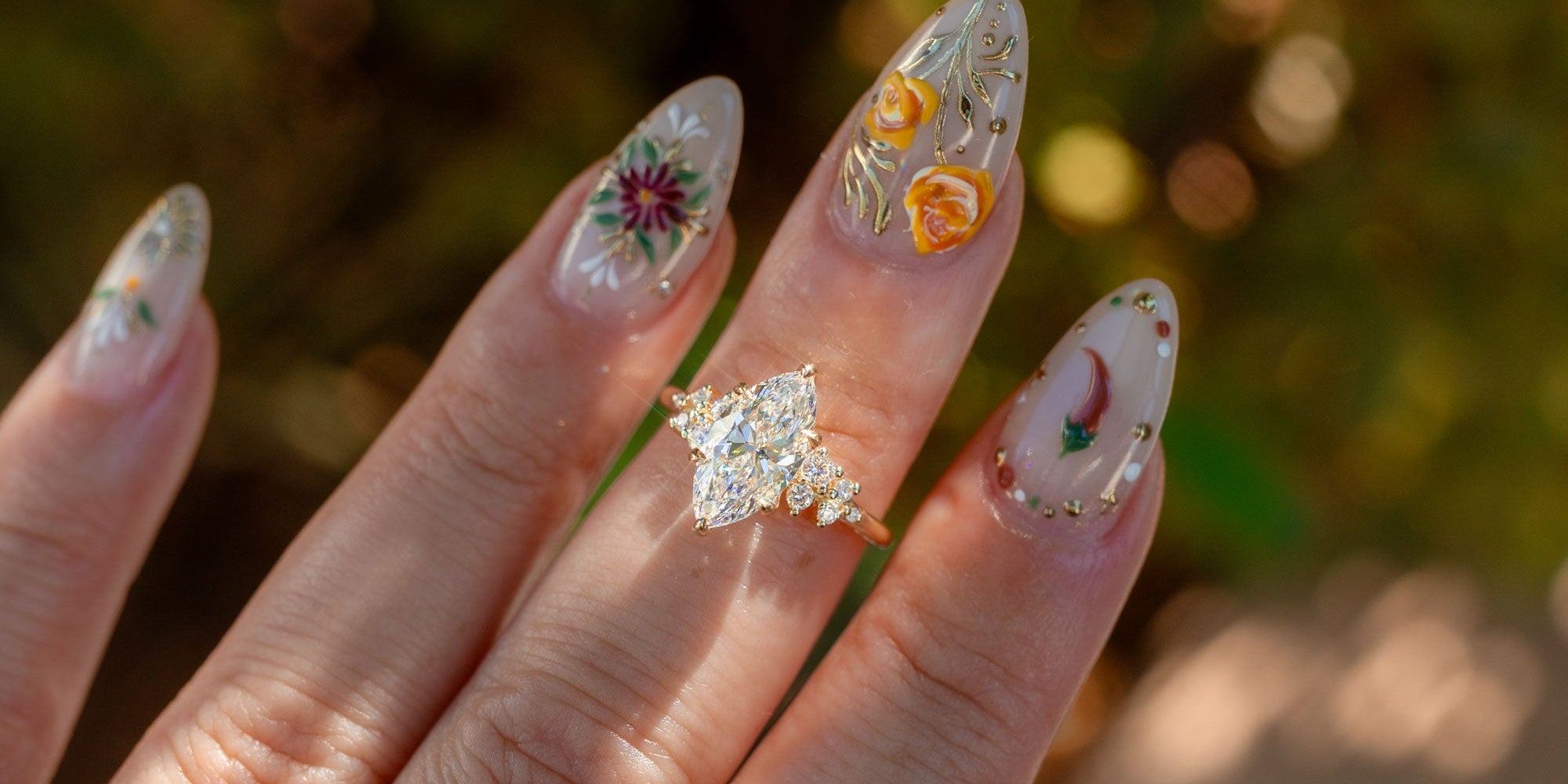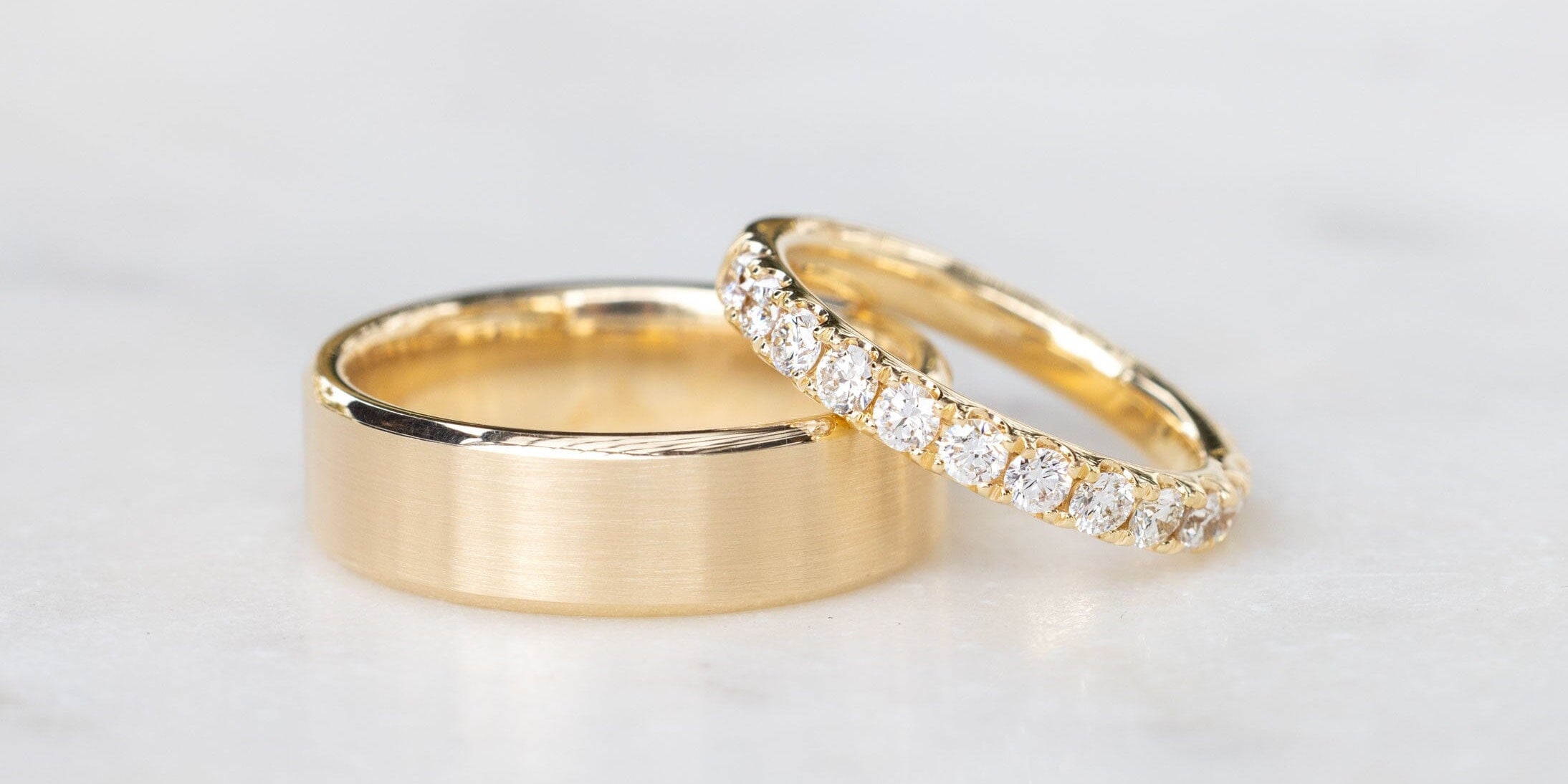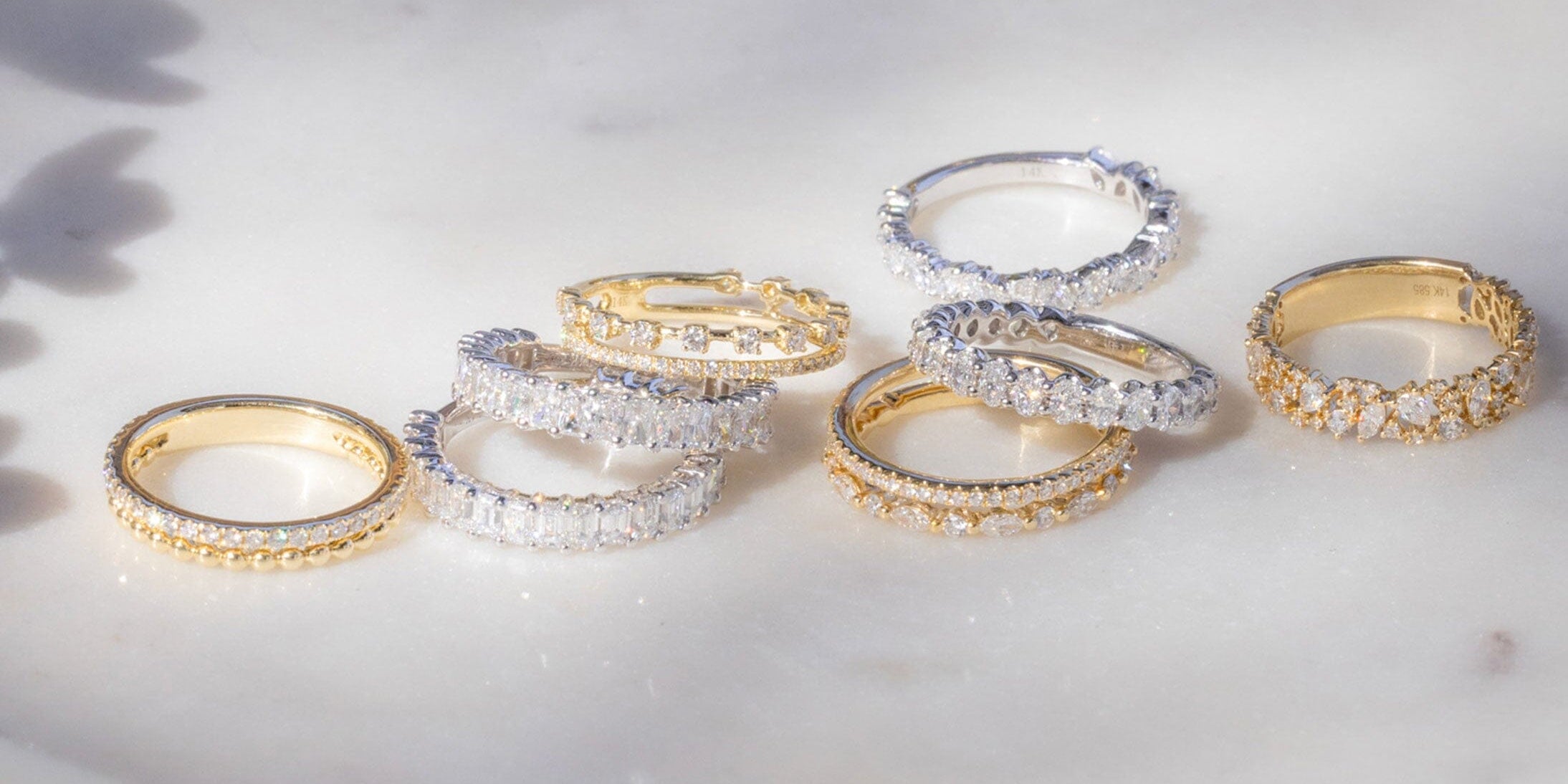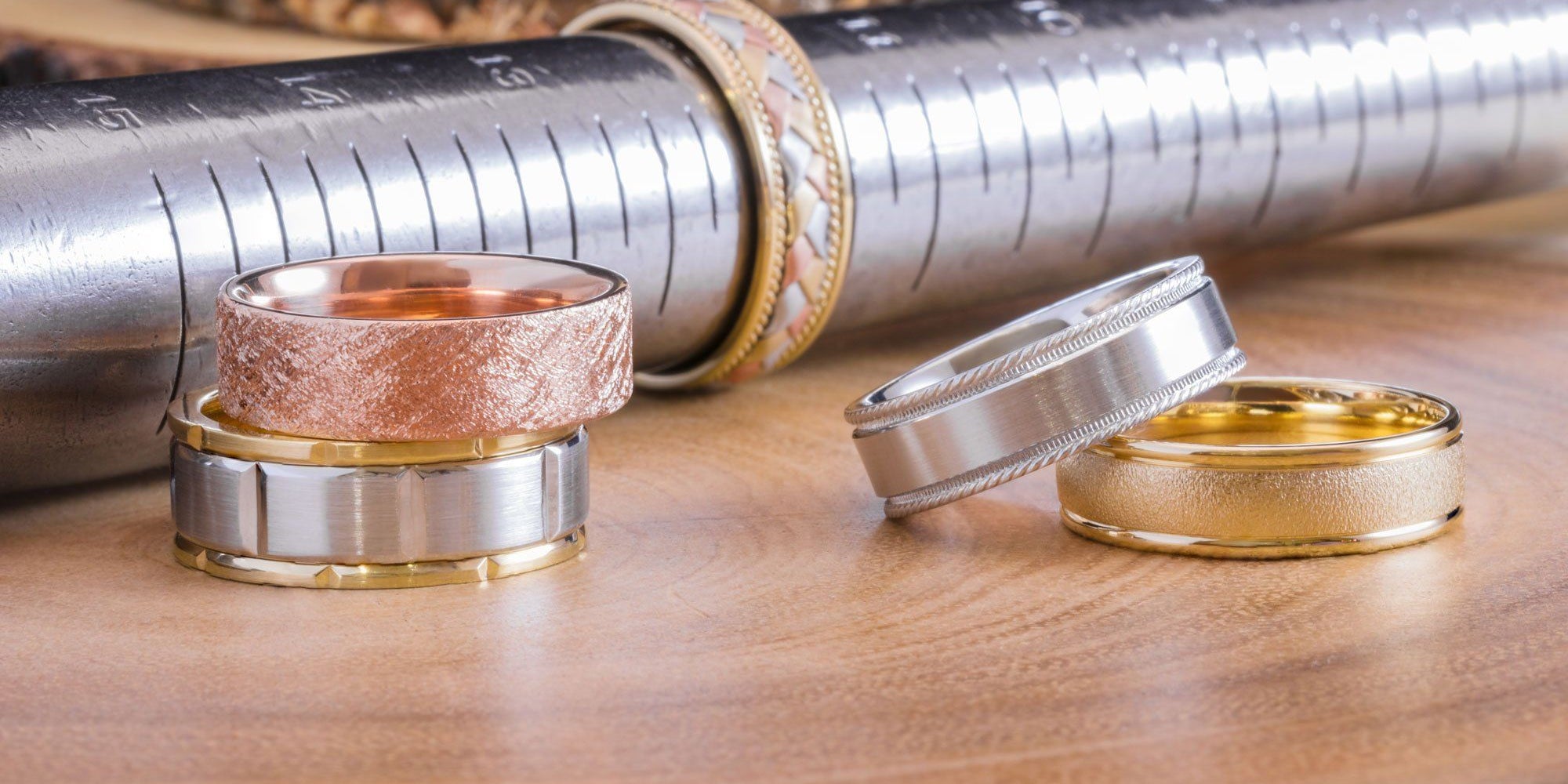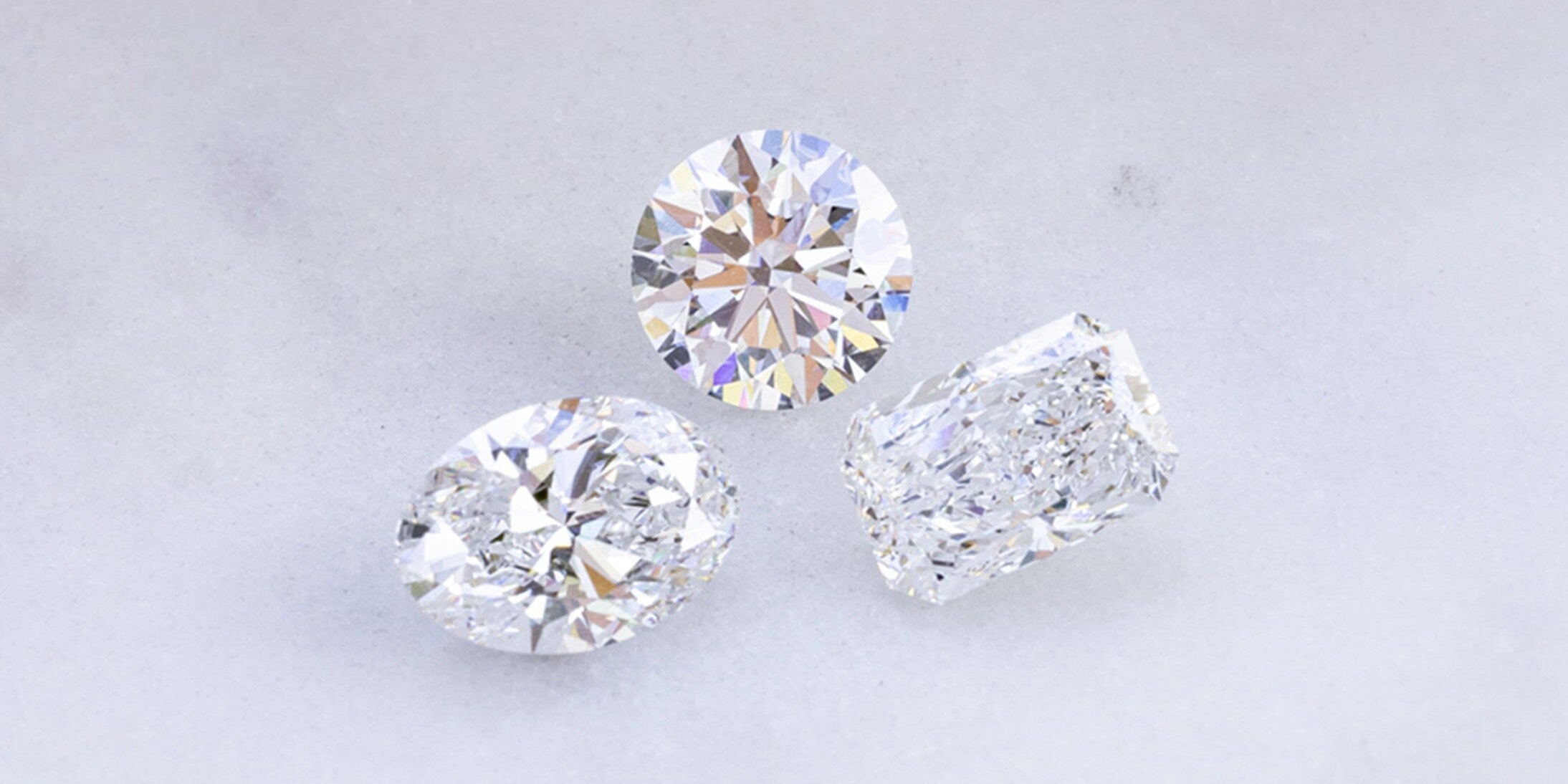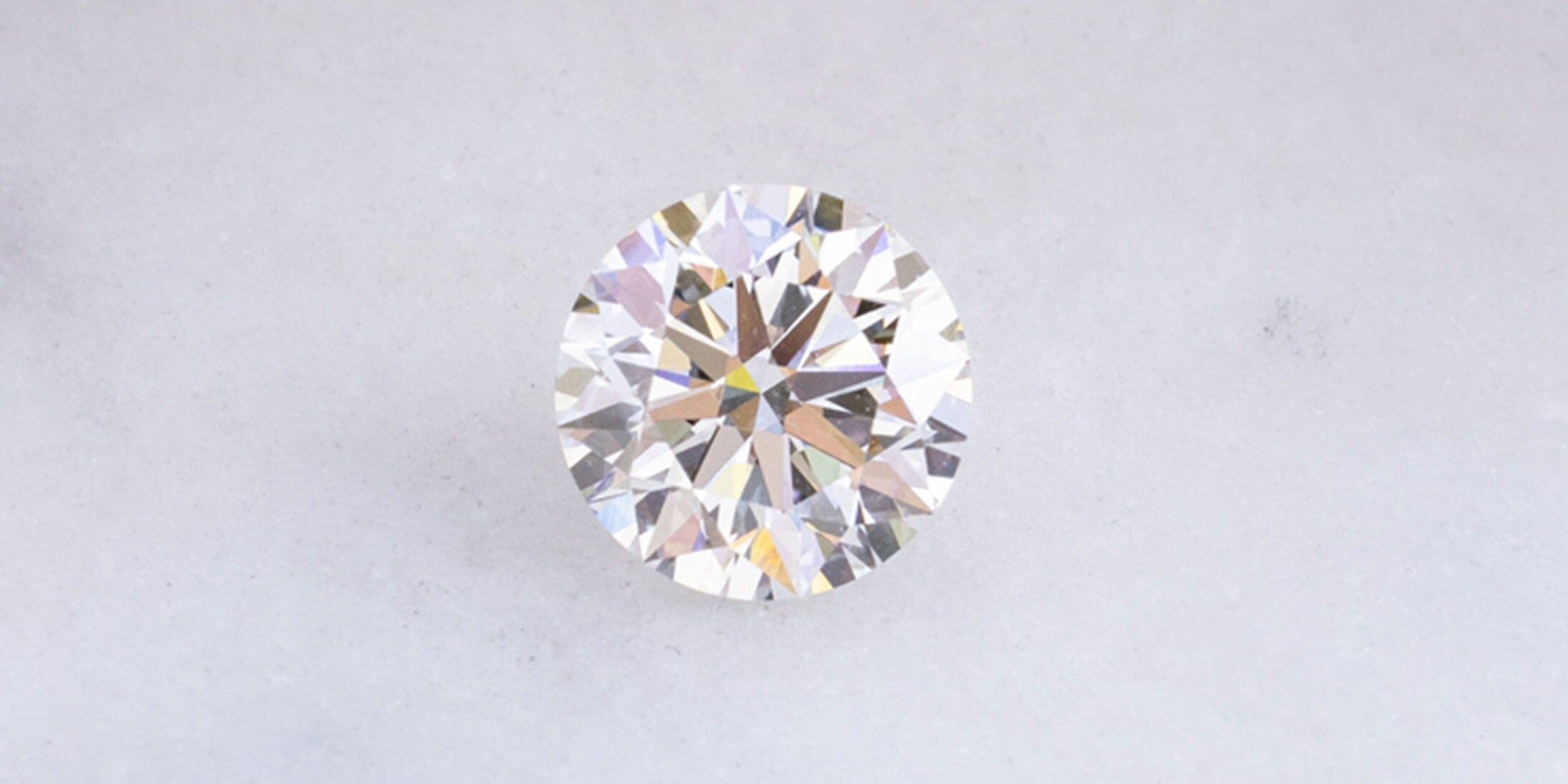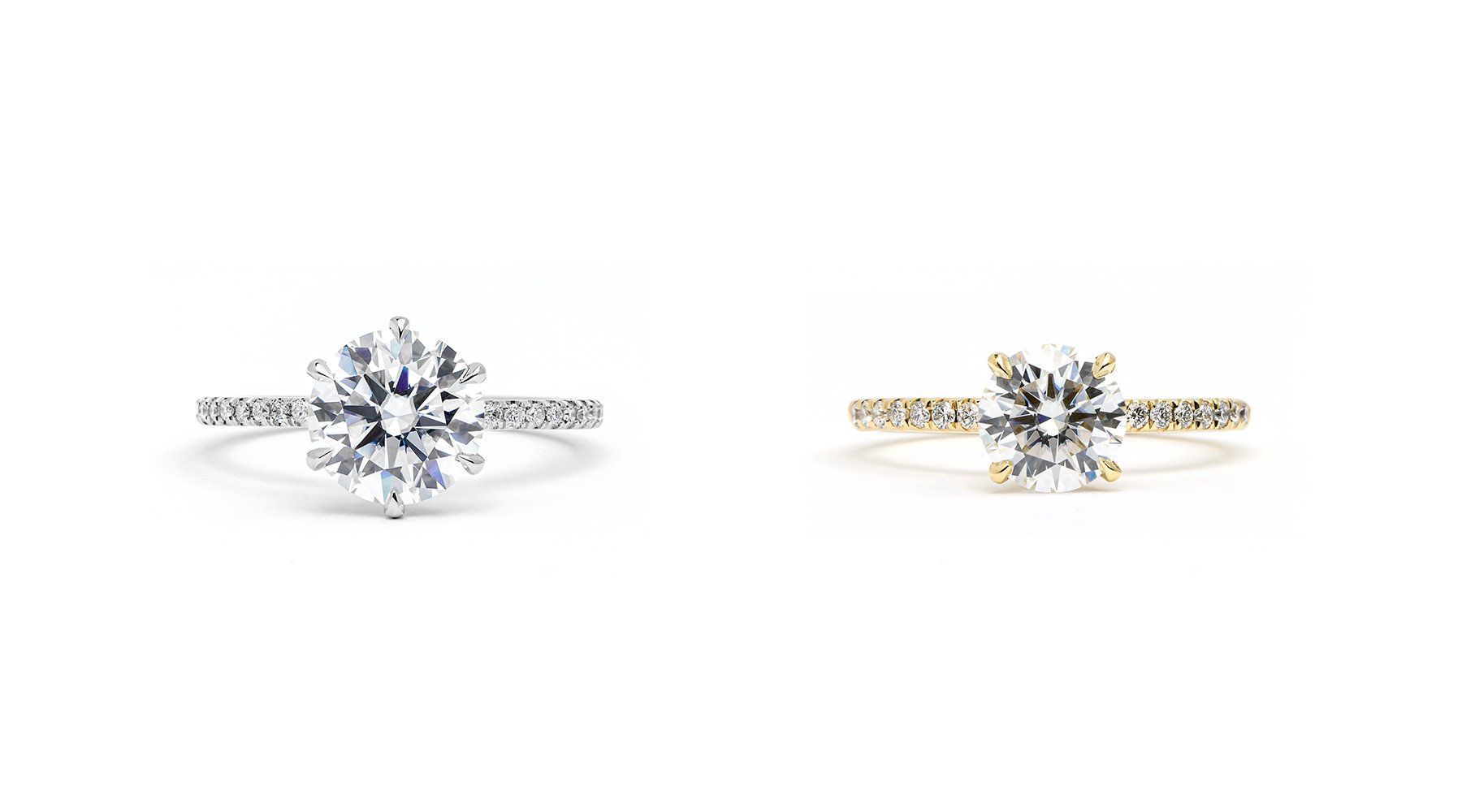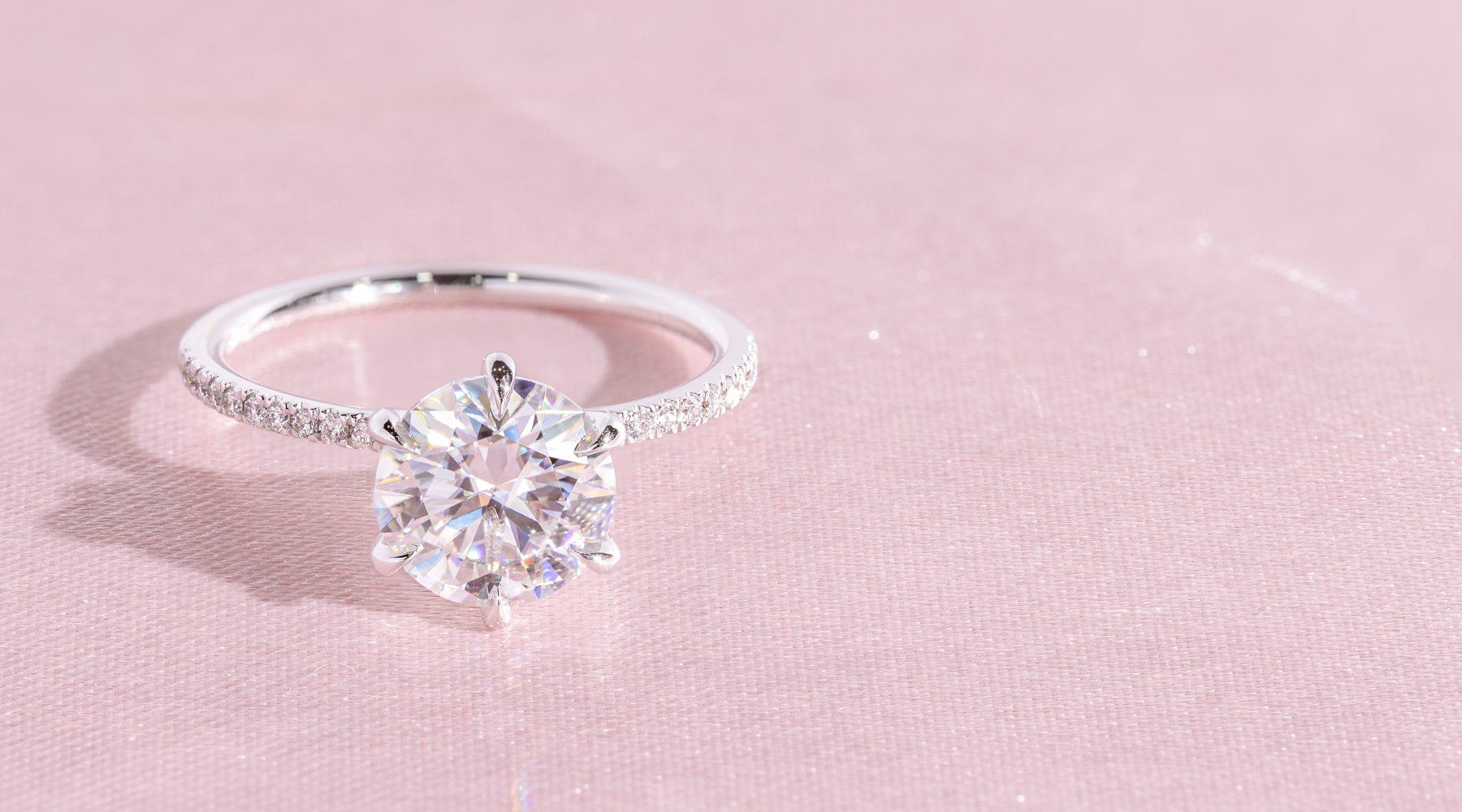Prongs are the claw-like structures on a ring that hold stones in place. 4-prong and 6-prong style heads are the two most popular types you will decide between to hold the center stone of your engagement ring.
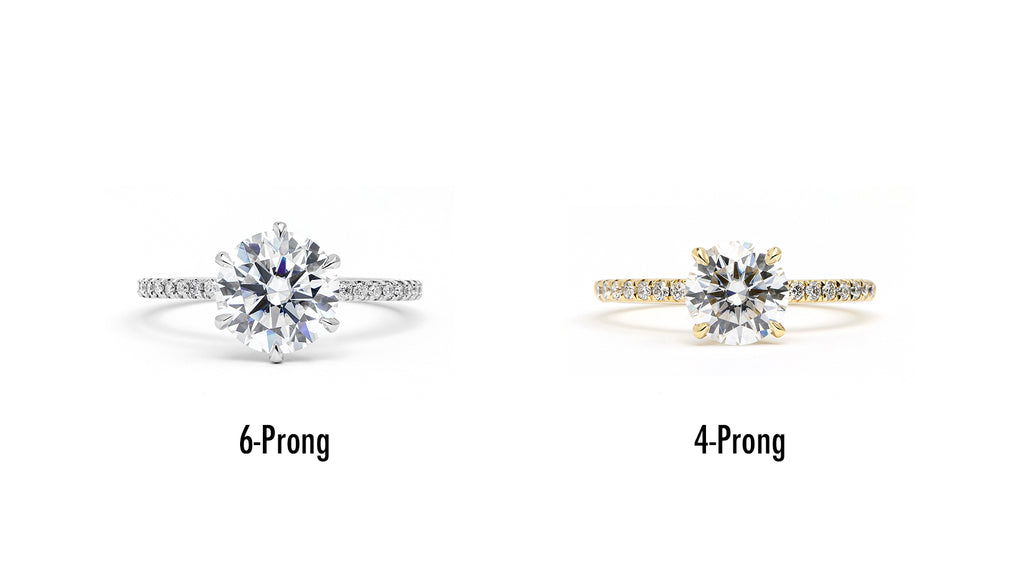 Four-Prong Settings
Four-Prong Settings
Pros
- Less metal on the diamond.
- Gives a diamond a more “squarish” look, making it a good choice for princess cut, cushion cut, and other diamonds that are square or rectangles.
- Works well with smaller center stones.
Cons
- Slightly less secure than six prongs.
- Not as much protection for the girdle
Six-Prong Settings
Pros
- More prongs to hold the center stone securely in place. If a prong gets broken off in a four-prong setting, the center stone can easily fall out (and get lost). If a prong breaks in a six-prong setting, chances are the center stone will remain firmly in place.
- Better protection to the diamond’s girdle.
- Popular for round or oval shapes.
Cons
- Diamonds smaller than half a carat may be overshadowed by all the prongs.
In the end, choose the prongs style you love most and like best to go with your diamond.



